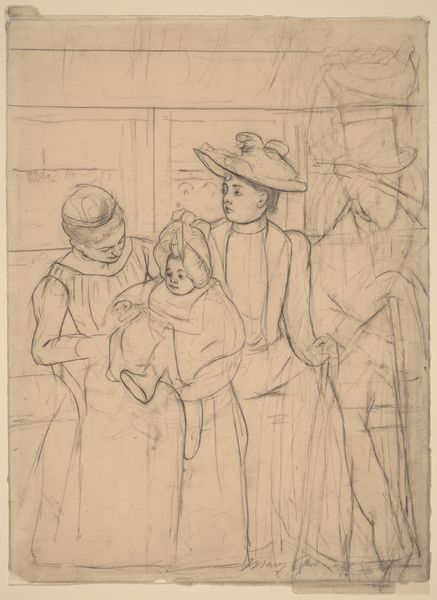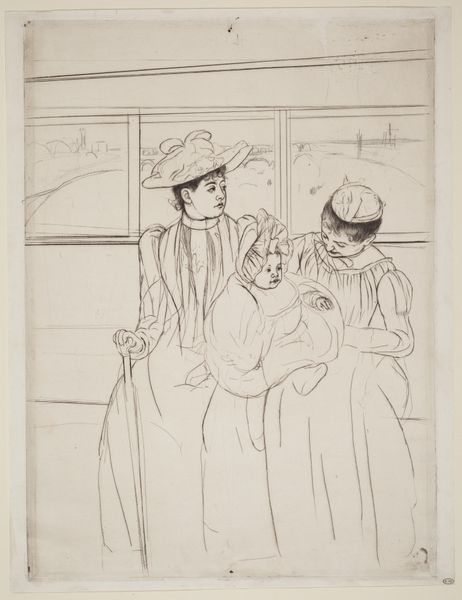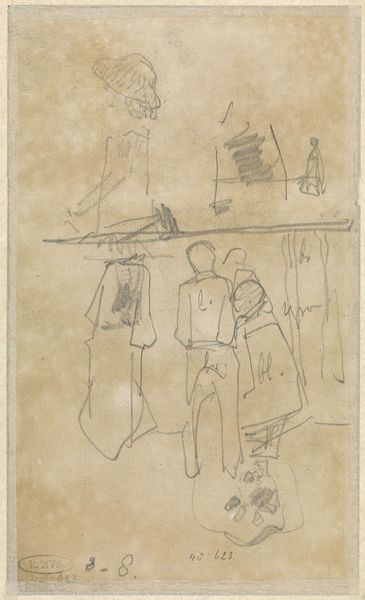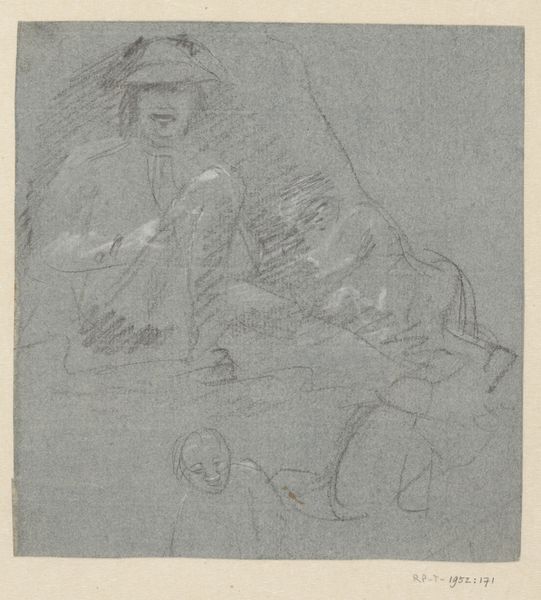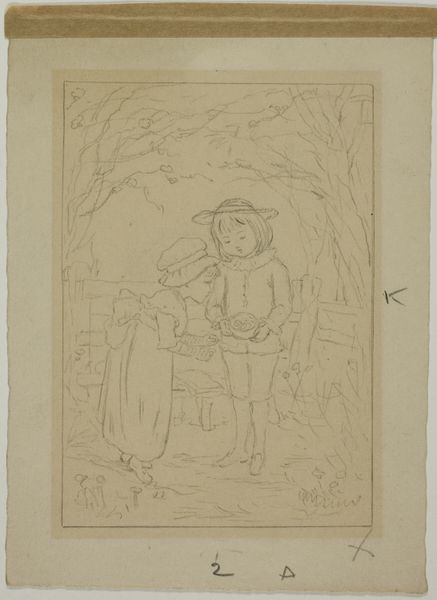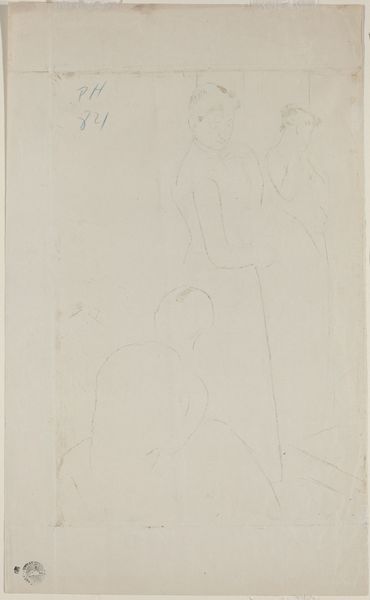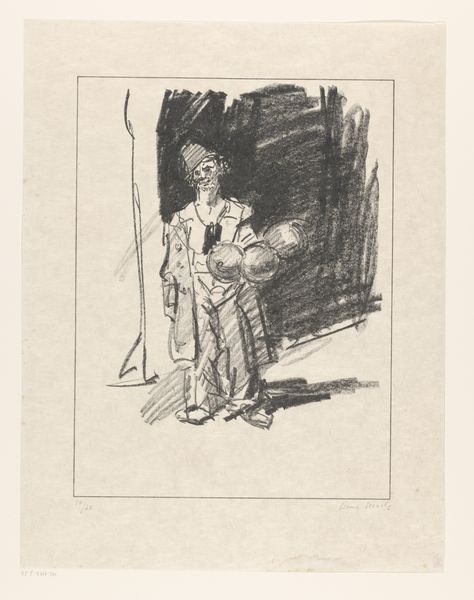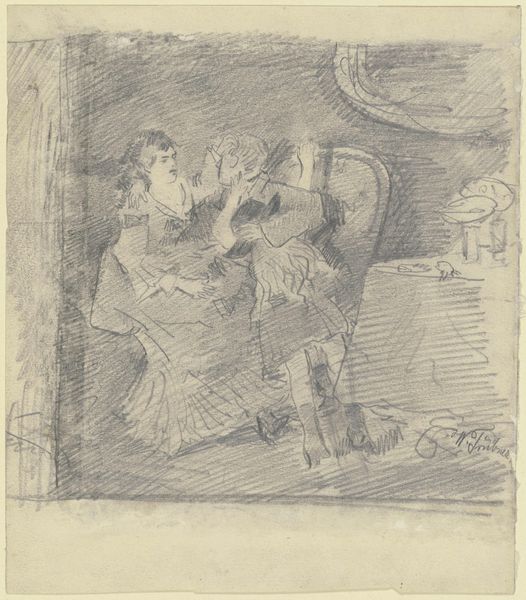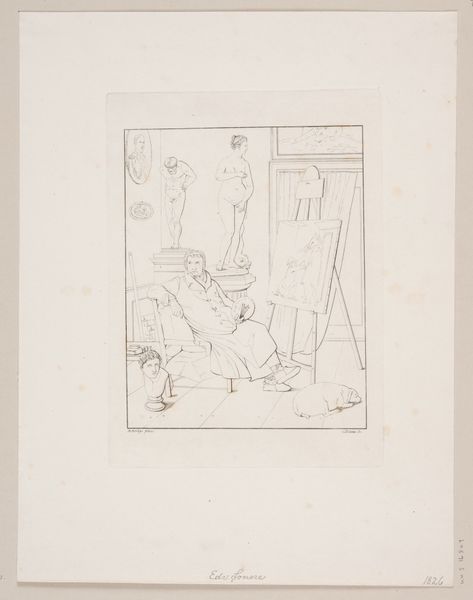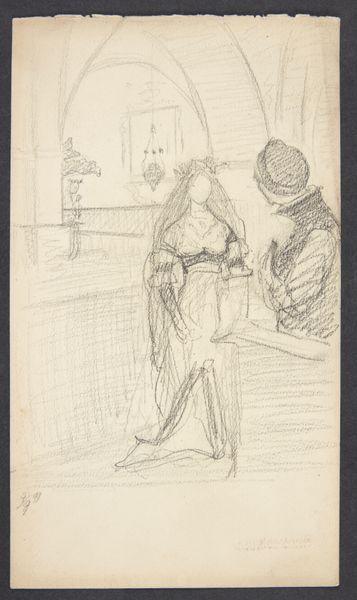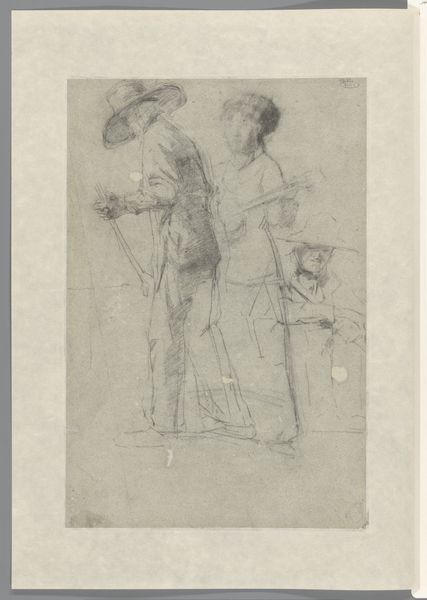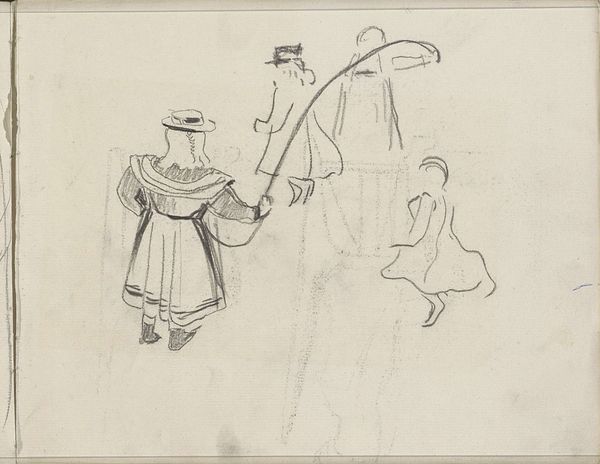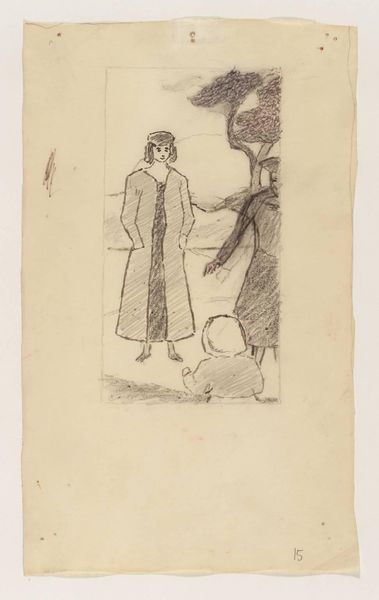![In the Omnibus [verso] by Mary Cassatt](/_next/image?url=https%3A%2F%2Fd2w8kbdekdi1gv.cloudfront.net%2FeyJidWNrZXQiOiAiYXJ0ZXJhLWltYWdlcy1idWNrZXQiLCAia2V5IjogImFydHdvcmtzLzk3Y2JiMDIwLWRmMjMtNDAwYS1iMzA4LWUxN2E2NTc2ODU1Ny85N2NiYjAyMC1kZjIzLTQwMGEtYjMwOC1lMTdhNjU3Njg1NTdfZnVsbC5qcGciLCAiZWRpdHMiOiB7InJlc2l6ZSI6IHsid2lkdGgiOiAxOTIwLCAiaGVpZ2h0IjogMTkyMCwgImZpdCI6ICJpbnNpZGUifX19&w=3840&q=75)
Dimensions: sheet: 37.94 × 27.15 cm (14 15/16 × 10 11/16 in.)
Copyright: National Gallery of Art: CC0 1.0
Curator: Mary Cassatt’s drawing, "In the Omnibus," from around 1891, offers a fascinating peek into a slice of Parisian life during the Impressionist era. It's a graphite study featuring two women and a child, presumably on public transportation. What’s your first impression? Editor: Spare, almost austere. It lacks the vibrancy I associate with Impressionism, but the starkness emphasizes a psychological isolation. The women seem lost in their own worlds despite their proximity. Curator: Indeed, even in its preliminary state, Cassatt's command of unspoken narrative is striking. The omnibus itself functions as a contained social space, reflecting the burgeoning urbanization and shifting social dynamics of the late 19th century. Notice how the seated woman with the hat gazes passively out the window, seemingly disconnected from the tender moment between the standing woman and the child. It hints at complex psychological states. Editor: Precisely. Her averted gaze could signify boredom, contemplation, or even social anxiety—conditions amplified by the anonymity of urban life. And there’s a universal quality here. The symbol of public transportation as a crucible of disconnected individuals continues into our own time, making the piece more than a period document. The figures loom larger within the frame than one would expect for a study, inviting contemplation of this quiet public drama. Curator: Cassatt was deeply engaged with representing the everyday lives of women, particularly within the domestic sphere, but the omnibus drawing places them squarely in the public realm. Consider, also, the hat of the seated woman – a key identifier of her social status, indicating an accessible but also protected femininity. It suggests a subtle defiance within a societal framework. Editor: Yes, a declaration but within clear boundaries! This resonates in her larger body of work: assertions of female experience conveyed within prescribed roles. It also raises interesting questions about class – are the women related, strangers, of equal social standing? The answers become more crucial because so little information is offered. This, coupled with the seemingly unfinished execution, creates a unique space for engagement with the viewer. Curator: I think this work beautifully illustrates the power of preliminary sketches to convey potent societal observations, especially by Cassatt, and demonstrates her commitment to representing the New Woman and her place in a rapidly evolving world. Editor: Absolutely. It compels one to consider both the liberation and the alienation that arose for women in urban society, a conversation that is ever relevant.
Comments
No comments
Be the first to comment and join the conversation on the ultimate creative platform.
